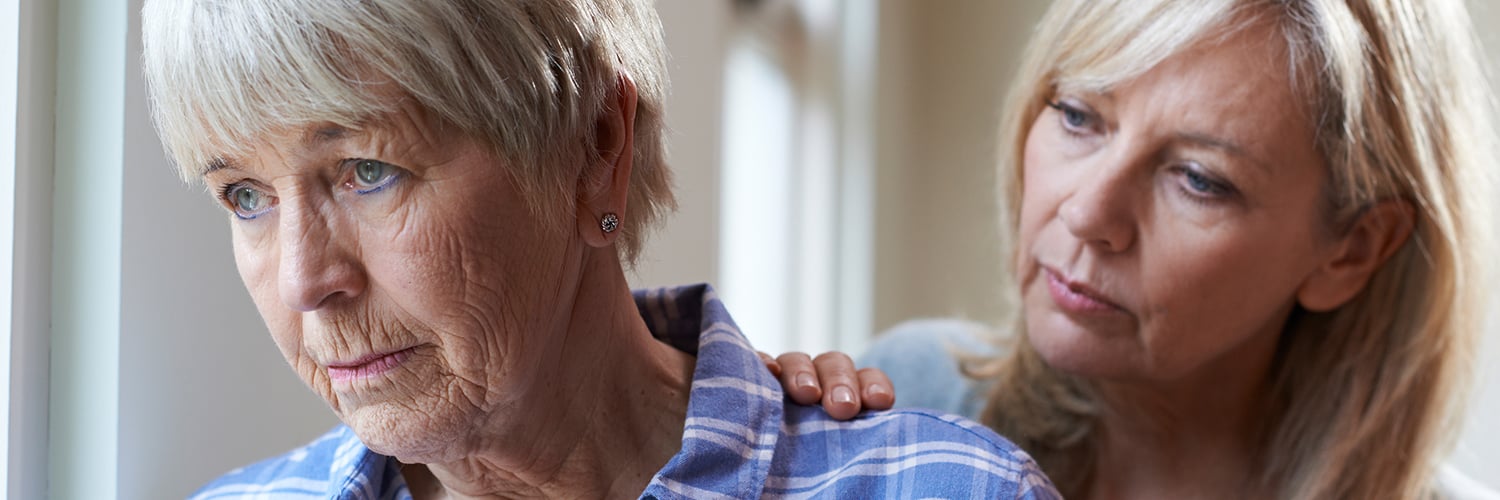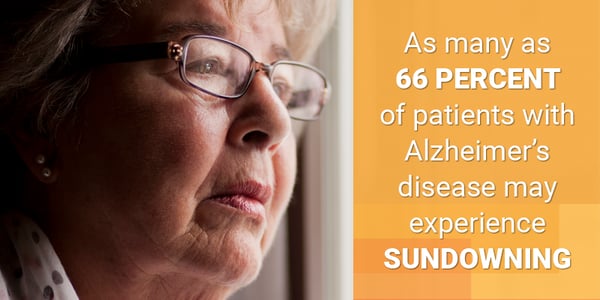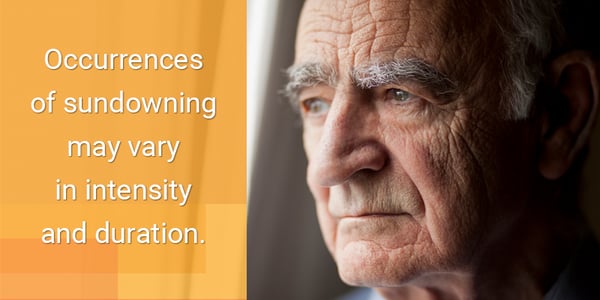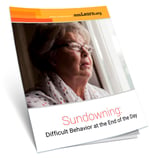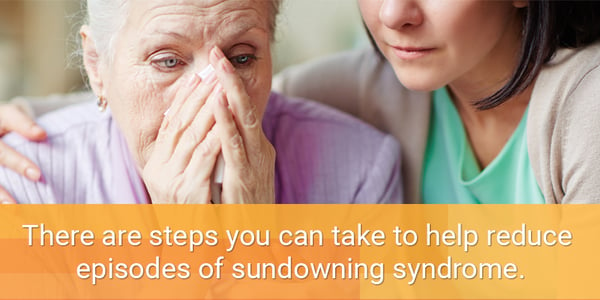It’s important to consider risk factors for sundowning because if caregivers can help identify a person’s risk factors, they can work to reduce them. In turn, minimizing those factors could help lessen or eliminate episodes of the syndrome.
So what are the risk factors? This is a hot topic in the medical field right now, and it's only going to heat up more. Some factors believed to increase someone’s risk factors for sundowning include age, fatigue, environmental factors, and damage to a part of the brain called the suprachiasmatic nuclei (SCN).
Sleep and Damage to the SCN
People spend a third of their lives in the physiologic state of sleep, which is finally starting to get the attention it deserves from medical experts because it is clearly tied to health. Restful sleep is like a powerful medicine. Sleep — or lack of it — can impact those who experience sundowning.
As those with dementia age, damage begins to occur to SCN, which is positioned very deep in the brain beneath the hypothalamus. Data indicates that this is a sleep-promoting center and that it is affected by light and temperature, along with certain kinds of neurotransmitters, like melatonin.
Our brain produces melatonin, and evidence indicates that melatonin helps induce and maintain sleep. Melatonin is a protein that is triggered by darkness, so as darkness falls, we get more of it. As light occurs, it fades out. People lose melatonin as they age.
Some experts believe a risk factor for sundowning syndrome may be damage to the SCN, causing a loss of volume and neurons. With this damage cellular physiology and metabolism is also lost. All these factors could contribute to the experience of sundowning.
Unfortunately, it is not yet known how to avoid damage to the SCN, but that could be on the horizon.
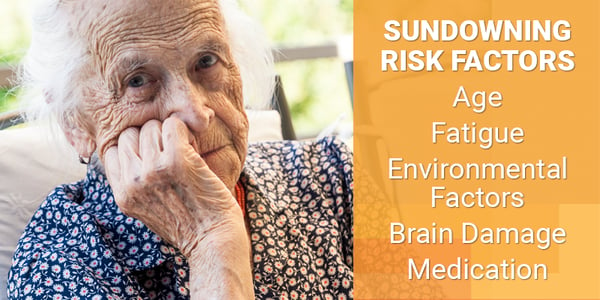
Environmental Conditions
Another risk factor believed to affect sundowning is a person’s environment, including noise, lighting and other distractions. If you visit a memory care unit at a nursing home at 9 am and then 5 pm, you’ll notice differences in these ambient factors. The lighting will be different, the staff will likely have changed and unique noises may be present.
At night, residents will have a different level of exposure to artificial or natural light. Shadows may appear. Residents may be exhausted or depleted from daytime activities. Noises like bed alarms, medical devices, and medication dispensations may cause disruptions. Any of these elements may trigger sundowning.
Medication and Medical Conditions
Medication may also be a risk factor for sundowning. Medications are dispensed in different dosages and may have differing concentrations throughout the day. So, people who are getting morning medicines may experience a drop in concentration by 4 pm.
A patient’s medical conditions may also impact sundowning. Imagine someone with congestive heart failure, arthritis and type 2 diabetes that causes their blood sugar levels to swing. Imagine they’ve had a hip replacement and a knee replacement. Even if they wake up feeling refreshed and full of energy, they may begin to experience pain as the day wears on. This could contribute to an episode of sundowning.
Circadian Dysregulation
Some of the current medical thinking is that sundowning may have a lot to do with circadian dysregulation. This means that the circadian rhythm — or the 24-hour process that living beings undergo, which can be affected by light and temperature — becomes misaligned somehow.
One of the theories is that perhaps dementia patients experiencing sundowning syndrome are getting inadequate exposure to light early in the day. And this could be coupled with damage to the SCN and decreased melatonin production. Then later in the day, lighting becomes lower and shadows appear. If you already have a baseline of confusion, these other factors can turn it up a notch.
